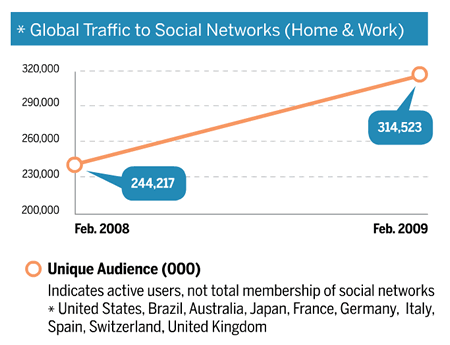Nielsen Wire this week posted some interesting findings and thoughts regarding the change in consumer behavior around the world. It did so in preparation of its Consumer 360 event in Las Vegas next month.
With the world trying to overcome one of the worst global slowdowns in the last four decades, recovery is taking different forms and consumers are becoming more “diverse, demanding and connected”, Nielsen Wire writes. While developing countries are witnessing strong resurgence, rich states are getting into the mode of sluggish rebounds.
Consumer behavior is becoming diverse with each passing day and changes in consumer attitudes differ all around the globe. While a part of it can be attributed to the recently concluded financial downturn, others have been in the process of gaining momentum for some time.

Now the behavioral changes in global consumers are diverse enough to create new challenges and opportunities for marketers. In addition, global consumers are also becoming more demanding and connected posing enough challenges for businesses.
Markets and economies
However, it is also a fact that the number of consumers is continuously increasing, although in an uneven manner. There will be over a billion more people on the planet by 2030, with only 3% of them born in the so-called “developed world”.
Most less “developed” nations will witness a population growth rate 30 times greater than the current rates. There is a growing possibility of families with children becoming a niche market with fall in the birth rates in places like Europe, North America, South Korea and Japan.
If facts are to be believed, China – the world’s most populous country- has the current fertility rate around 1.8, which is slightly above the most industrialized nations.
With an average age of just 25, India is one of the youngest major economies in the world. So, it is not only a large economy, but also consists of a growing working age population. It will benefit greatly from it.
Some other striking data:
- In 2010 the average age of the consumer is 29 years, in 2050 it will be 39
- By 2050 for the first time there will be more people over 60 years than people under 15
- In 2030, one out of three consumers worldwide will be “middle class”
What brings people together?
From a media and online behavior viewpoint Nielsen obviously looks at the increasing use of the Web and social networks.
However, it is the mobile phone, according to Nielsen the most rapidly adopted technology ever, that “will most profoundly connect consumers”.
Some striking data for three “screens”:
- We watch 3 hours and 8 minutes TV per day
- Since 2003 viewing online video has grown 1828%
- Half of all people on this planet have a mobile phone. Before the end of the decade everyone will have one.
- In 2012 half of the mobile phones in the US will be smartphones
More insights in consumer attitudes can be read online in Point Magazine, a publication of the DMA, here.

